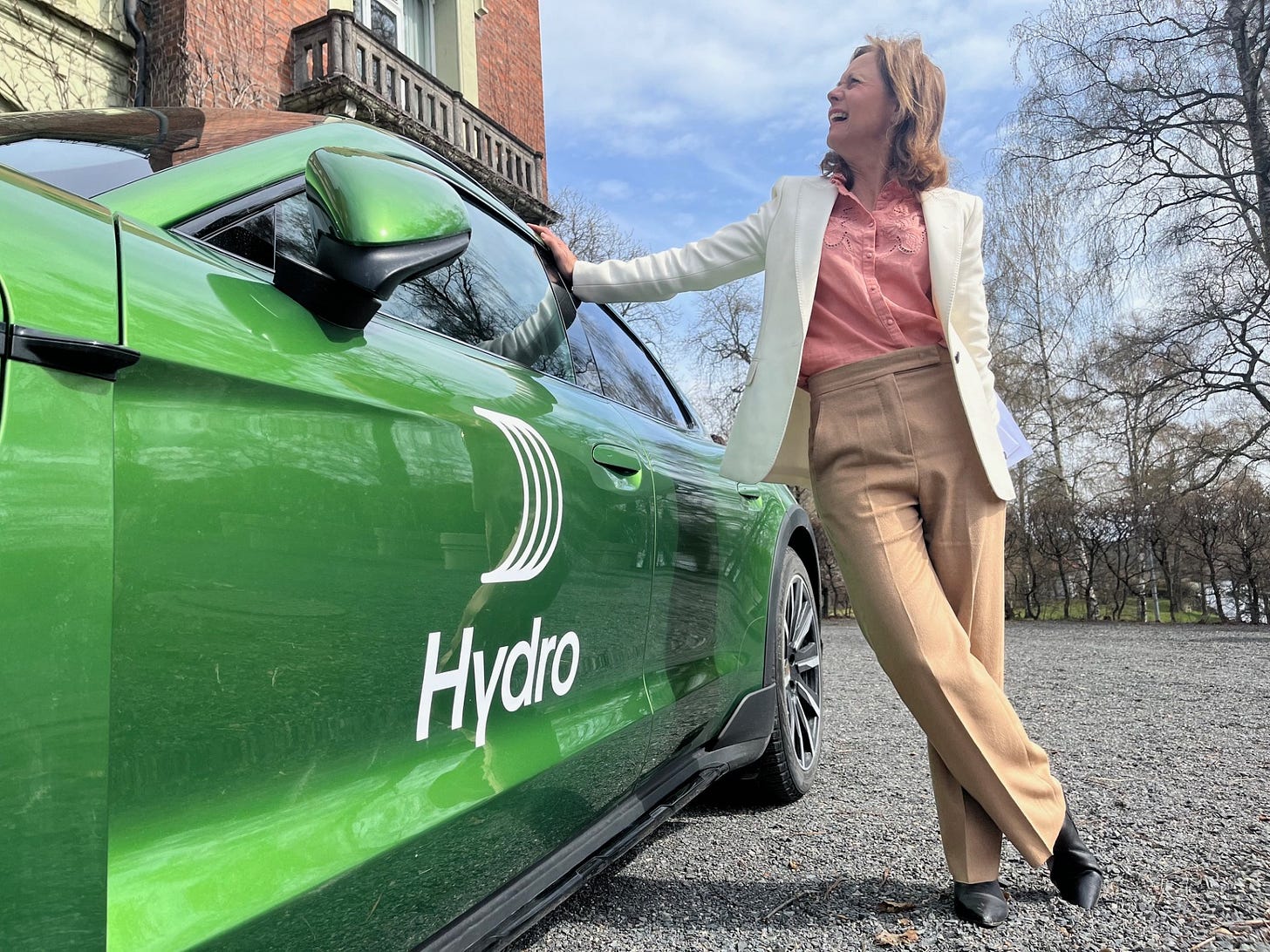Hilde Haugen Kallevig, vice president at Norsk Hydro, recently relocated to San Francisco. She wants to convince companies like Tesla and Rivian that low-carbon metals are both an environmental benefit and a smart business move, even if the cost is higher.
Haugen Kallevig sees a shift to green materials as an opportunity for Silicon Valley’s forward-thinking companies.
“Companies must start to see sustainable materials as a way to differentiate in the market and meet new government incentives, rather than just focusing on cost,” she says.

Even if was mainly her husband’s job that brought her to San Francisco, she views Silicon Valley as an ideal base to influence the U.S. tech industry.
The U.S. remains one of Norsk Hydro’s largest and fastest-growing markets, but Haugen Kallevig acknowledges that, still, only a few American companies are currently willing to pay the premium for sustainable materials, even if it’s just a few extra cents per kilogram.
"The price is the biggest hurdle at this point," she says, noting that while sustainable materials offer added value for companies, producing them responsibly inevitably involves higher costs.
“We know from our European experience that companies may at first not see the value in sustainable materials, and question the cost, once they understand how it influences consumer behavior they become willing to pay.”
Norsk Hydro’s strategy is to show that low-carbon aluminum can be both an environmental and competitive asset, making it a core part of the market strategy for companies leading the green transition—even as price alignment with traditional options remains uncertain. Haugen Kallevig believes modern automakers like Tesla and Rivian could be ideal “first-steppers.”
“Imagine if we knew the carbon footprint of everything we bought, from mining to finished product. Would that impact our choices? I think so. And if consumers made decisions based on environmental impact, producers would respond, creating demand for low-footprint materials,” she says.
She emphasizes that not all aluminum is created equal.
“Aluminum isn’t just aluminum anymore. It now comes in shades of green or gray depending on production methods,” Haugen Kallevig explains, adding that the carbon footprint varies greatly based on where and how the metal is made.
“Aluminum from Norway, produced using renewable hydropower, has a far lower carbon footprint than that made in regions where fossil fuels dominate.”
Norsk Hydro is one of the world’s largest aluminum producers, operating in over 40 countries. Known for its commitment to sustainability, Hydro uses renewable hydropower for much of its aluminum production, resulting in some of the industry’s lowest carbon footprints. The company aims to cut carbon emissions by 30% by 2030 and has a growing market share in low-carbon aluminum, supplying sectors like automotive and electronics.
Norsk Hydro’s headquarters is in Oslo, but the company operates in multiple locations across the United States, including Texas, Maryland, and Michigan facilities—and now also a vice president in Silicon Valley.
Facts
Norsk Hydro Overview:
Norsk Hydro is an aluminum and renewable energy company with operations in 40 countries and 140 locations worldwide, covering the entire aluminum value chain.
Norsk Hydro in North America: Norsk Hydro is the largest producer of aluminum billets in North America, and all of its production is based on recycling. The company’s goal is to lead in low-carbon aluminum solutions, expanding its U.S. capabilities in both aluminum metals and the extrusion business. Recent investments include a new recycling plant in Michigan that produces high-quality aluminum from over 75% post-consumer scrap. Norsk Hydro operates 35 recycling facilities across Europe, North America, and South America.
Certified High-Content Recycled Aluminum: Norsk Hydro was the first to launch certified aluminum with a high content of post-consumer aluminum in Europe and has now brought this innovation to North America.
Green Transition and Circular Economy: Norsk Hydro aims to drive the green transition in sectors such as transport, construction, consumer goods, and furniture, by offering tailored, sustainable solutions that meet clients’ climate ambitions.
Circular Economy Investments: Recent investments include a joint venture with Padnos to implement a sorting system capable of handling complex post-consumer aluminum scrap. This supports streamlined, high-quality, low-carbon production across Norsk Hydro’s expanded U.S. recycling network, ensuring stable national supply chains for recycled aluminum.
Also:
At Verge24 this week in San Jose, Hilde Haugen Kallevik discussed Aluminum evolution and decarbonizing the supply chain.



